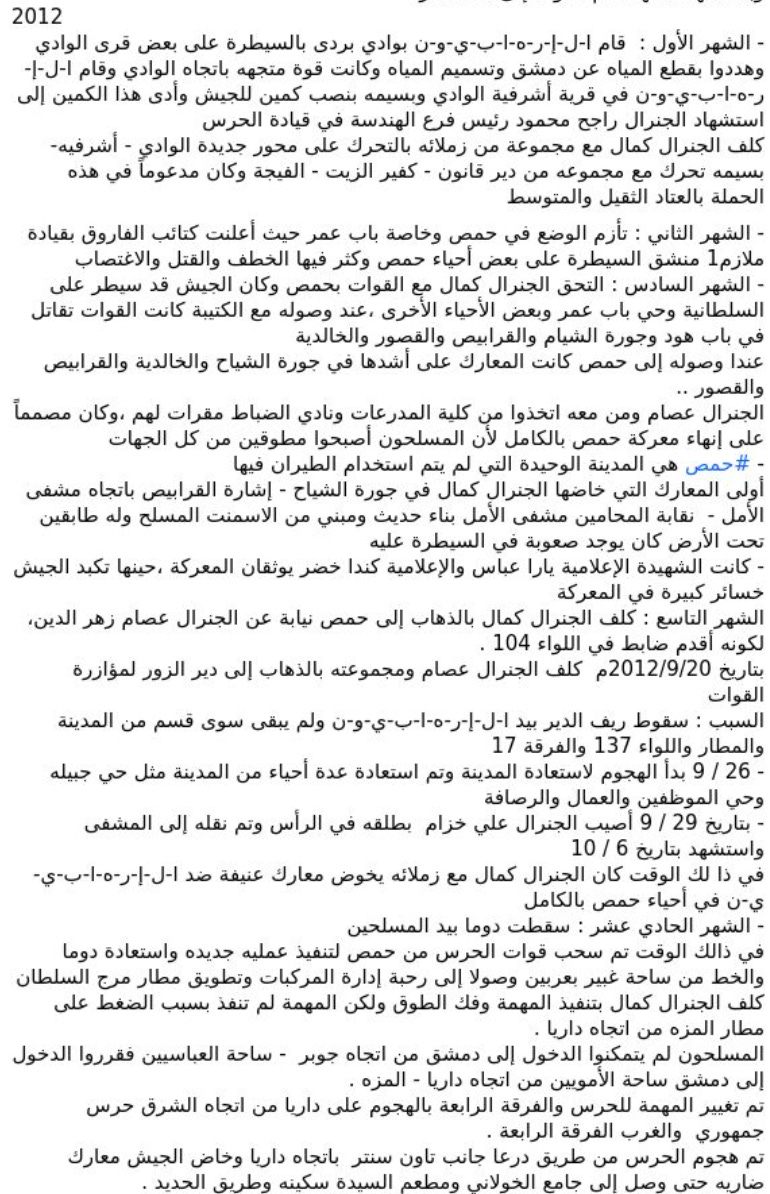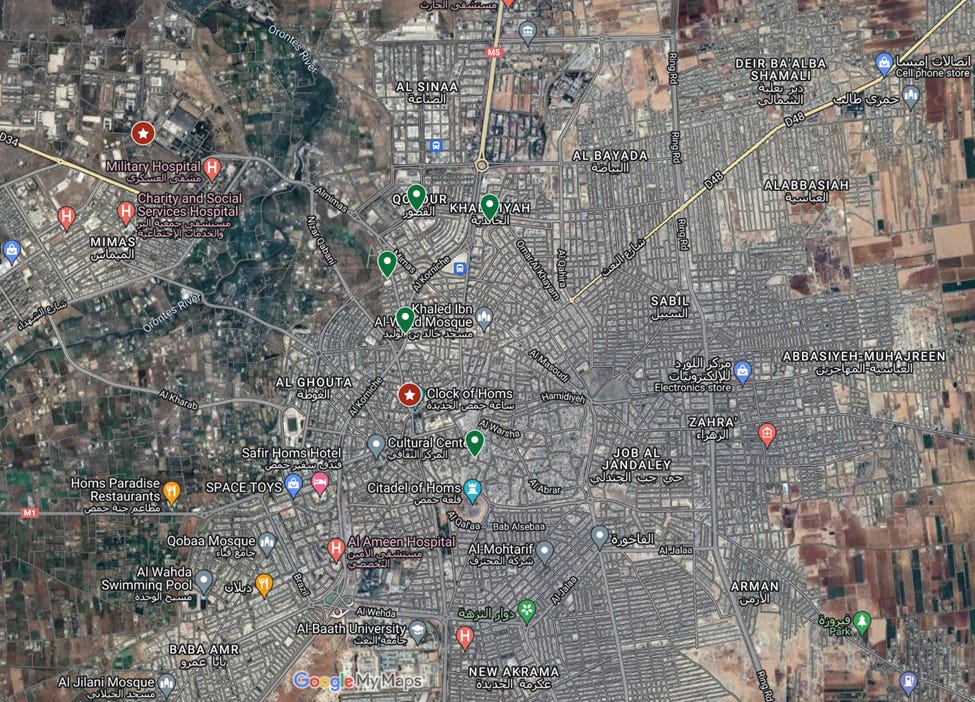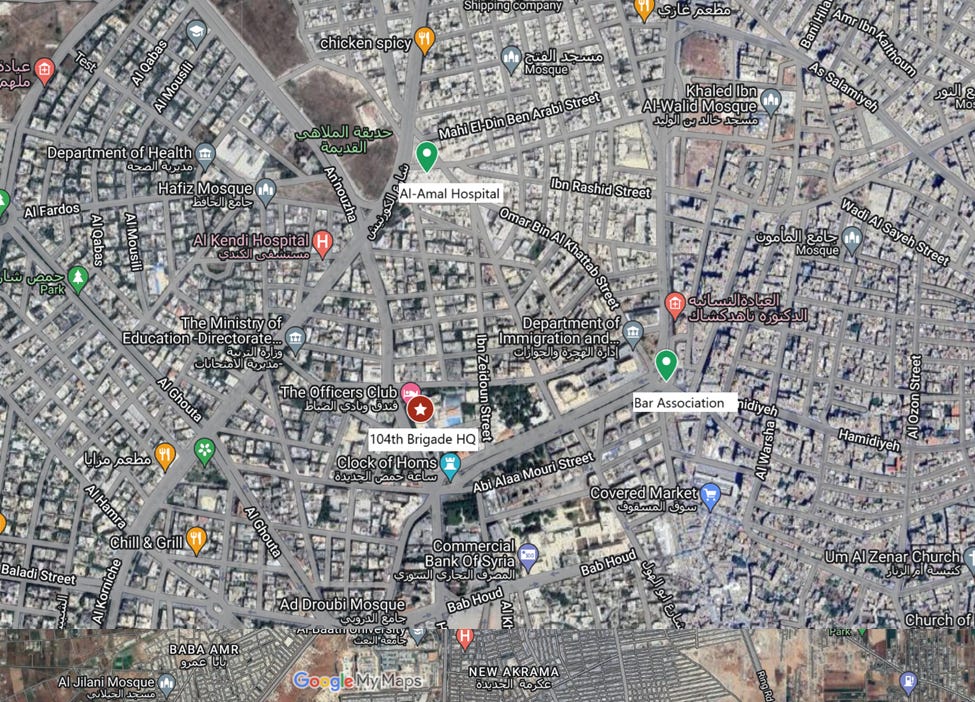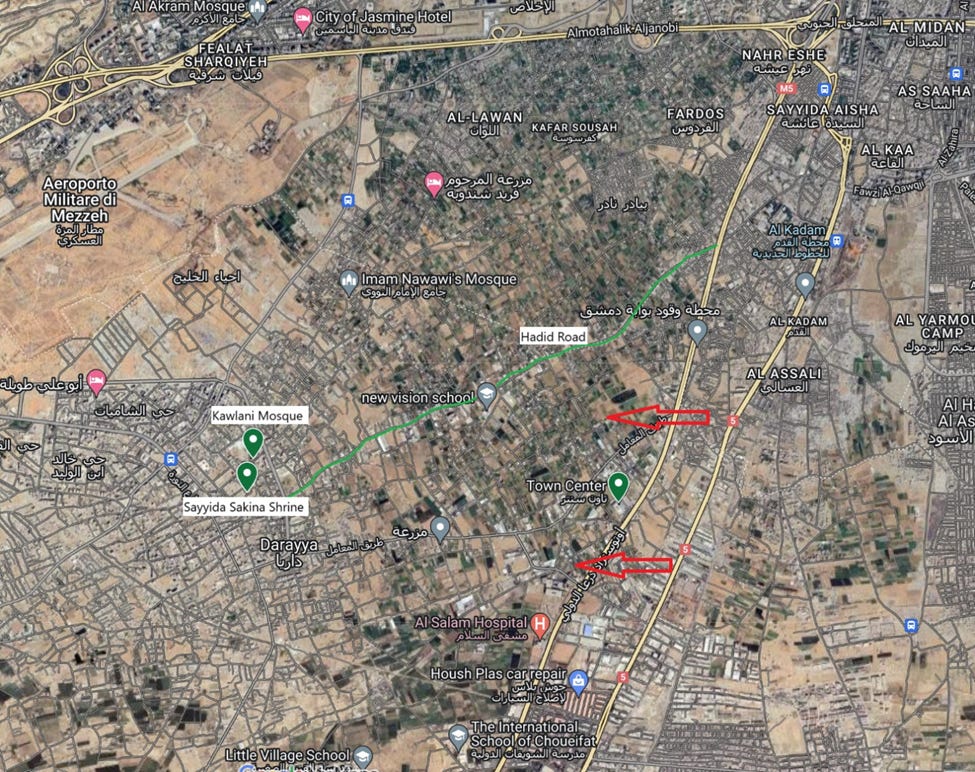Kamal Atiyeh's War Diary, Part 2
The Republican Guard commander's journey from Wadi Barada, to Homs, to Daraya.
Syrians have finally succeeded in overthrowing the Assad regime and now begin the long process of building a new government. A natural part of national healing will be at least a partial suppression of historical narratives from those who fought for Assad. Regardless of why they fought – whether out of misguided fear, a lack of choice, or devotion to the regime – the memories and histories of regime combatants and the battles from their perspectives now risk being lost to time. These accounts hold an important place in Syria’s historical record, however. They serve as a reminder of what the regime did to the Syrian people, as well as an indisputable record of the regime’s propaganda war against the opposition. But it is also a legitimate history of a large part of Syrian society, one that should not be waived away simply because of a lack of moral integrity. The stories from the perspectives of regime combatants are as much a part of Syria’s national narrative as those of the activists and opposition fighters – even if for all the wrong reasons. As Syrian civil society begins to balance the scales between amnesty and justice for the crimes of the past five decades, these stories can help provide a written record of the actions and intent of regime loyalists in their own words.
The following is one such account, a second excerpt from the 2021 biography of the (still living) Republican Guard general Kamal Atiyeh written and published online by a pro-regime source. Part one focused on his role leading the 104th Brigade’s 3rd Battalion in suppressing demonstrations in Douma in spring 2011 until the first major military operations against the armed opposition in East Ghouta in late January 2012. Part two of the biography looks at the rest of 2012, as his battalion is sent across Damascus and Homs to help in military operations targeting civilians and armed groups alike. The first half of this report will simply transcribe these events exactly as they were written in the original post. The second half will take a deeper look at each of these battles, the other units involved, documented regime casualties, and the impacts of the operations.
“2012
- The first month: The terrorists in Wadi Barada took control of some of the valley's villages and threatened to cut off water to Damascus and poison the water. A force was heading towards the valley and the terrorists in the village of Ashrafieh al-Wadi and Basima set up an ambush for the army. This ambush led to the martyrdom of General Rajih Mahmoud, head of the engineering branch in the Guard Command. [killed February 1, 2012]
General Kamal was assigned with a group of his colleagues to move on the axis of Jdeidet al-Wadi - Ashrafieh - Basima. He moved with a group from Deir Qanoun - Kafr al-Zeit - al-Fijah. He was supported in this campaign by heavy and medium equipment.
- The second month: The situation in Homs worsened, especially Bab Omar, where the Farouq Brigades, led by a defected Lieutenant, announced control over some of Homs' neighborhoods, and kidnapping, killing and rape increased.
- The sixth month: General Kamal joined the forces in Homs after the army had taken control of Sultanieh and Bab Omar neighborhoods and some other neighborhoods. Upon his arrival with the battalion, the forces were fighting in Bab Hood, Jouret al-Shiyyam, al-Qarabis, al-Qusour and al-Khalidiya.
Upon his arrival in Homs, the battles were at their fiercest in Jouret al-Shiyyah, al-Khalidiya, al-Qarabis and al-Qusour.
General Issam and those with him took the Armored Corps College and the Officers Club as their headquarters, and he was determined to end the battle of Homs completely because the militants had become surrounded from all sides.
- Homs is the only city in which aircraft were not used.
The first battles fought by General Kamal in Jouret al-Shiyyah - al-Qarabis pointing towards al-Amal Hospital - the Bar Association. al-Amal Hospital is a modern building made of reinforced concrete and has two floors underground. It was difficult to control it. The martyred media figure Yara Abbas and the media figure Kinda Khader were documenting the battle, at that time the army suffered heavy losses in the battle.
The ninth month: General Kamal was assigned to go to Homs [take charge of operations] on behalf of General Issam Zahreddine, as he was the oldest officer in the 104th Brigade. On 9/20/2012, General Issam and his group were ordered to go to Deir Ezzor to support the forces. Reason: The fall of the Deir Ezzor countryside into the hands of the terrorists, and only a part of the city, the airport, the 137th Brigade, and the 17th Division remained.
- 9/26, the attack began to retake the city [Deir Ez Zor], and several neighborhoods were retaken, such as the Jbeilah neighborhood, the Muwazafin and Al-Ummal neighborhoods, and Al-Rusafa.
- On 9/29, General Ali Khazam was shot in the head and was transferred to the hospital and martyred on 10/6. At that time, General Kamal and his colleagues were fighting fierce battles against the terrorists in all the neighborhoods of Homs.
- The eleventh month: Douma fell into the hands of the militants.
At that time, the guard forces were withdrawn from Homs to carry out a new operation and retake Douma and the line from Ghubeir Square in Arbin to the Vehicle Administration Square, and encircling Marj al-Sultan Airport.
General Kamal was assigned to carry out the mission and break the siege, but the mission was not carried out due to the pressure on Mezzeh Airport from the direction of Darayya.
The militants were unable to enter Damascus from the direction of Jobar - Abbasid Square, so they decided to enter Damascus’ Umayyad Square from the direction of Darayya - Mezzeh.
The mission was changed for the Guard and the Fourth Division to attack Darayya: from the east, the Republican Guard, and the west, the Fourth Division.
The Guard attacked from the Daraa Road, next to Town Center, towards Darayya, and the army fought fierce battles until it reached the Khawlani Mosque, Sayyida Sakina Restaurant, and the Iron Road.
By The Numbers
Syrian army combat losses – reported by the regime online and collected by this author over the years – provide a quantitative insight into the battles outlines in the above narrative. An examination of the specific battles Kamal Atiyeh participated in as well as the context in which they occurred follows, including extensive combat casualty data from this author’s own database.
Keep reading with a 7-day free trial
Subscribe to Syria Revisited to keep reading this post and get 7 days of free access to the full post archives.








